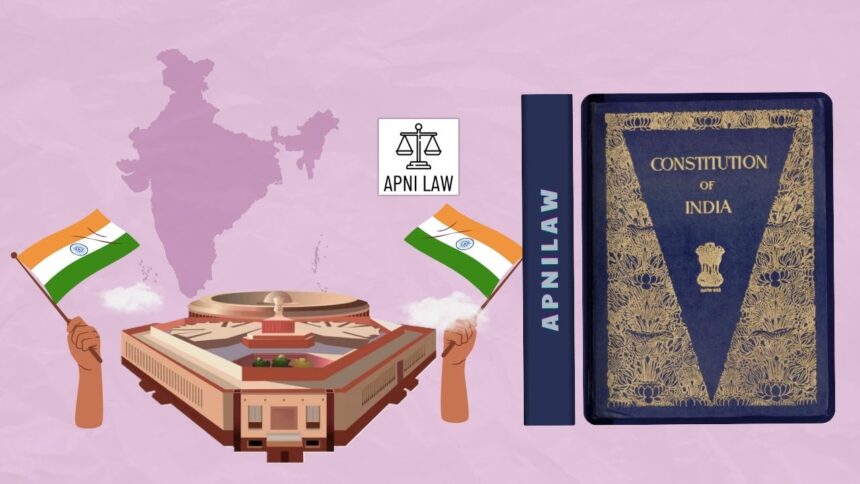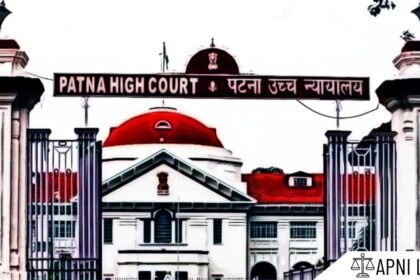Introduction
The Kesavananda Bharati Case (1973) is one of the most transformative judgments in India’s constitutional history. It set limits on the power of Parliament and established the Basic Structure Doctrine, a principle that continues to safeguard India’s democracy. The case was not merely a legal dispute; it was a defining moment that preserved the spirit of the Constitution against excessive parliamentary power. Through this ruling, the Supreme Court ensured that the Constitution remains supreme and that no government, however powerful, can destroy its core principles.
The judgment created a permanent balance between flexibility and stability. It allowed Parliament to make amendments when necessary but prevented any attempt to change the identity of the nation’s founding document. The decision reaffirmed India’s democratic ideals and protected future generations from constitutional misuse.
Background of the Case
The Kesavananda Bharati Case originated from a petition filed by Swami Kesavananda Bharati, the head of the Edneer Mutt in Kerala. He challenged the Kerala Land Reforms Act of 1969, which sought to impose restrictions on the management of religious property. The petition was filed under Article 26, which guarantees the right to manage religious affairs.
At the time, India’s political and legal environment was tense. Earlier cases had already sparked debate about the scope of Parliament’s power to amend the Constitution. In Shankari Prasad (1951), the Supreme Court had ruled that Parliament could amend any part of the Constitution, including fundamental rights. However, in Golaknath v. State of Punjab (1967), the Court took the opposite view and declared that Parliament had no authority to amend fundamental rights. These conflicting rulings created uncertainty.
In response, Parliament enacted the 24th, 25th, and 29th Constitutional Amendments to assert its power to make wide-ranging amendments. Swami Kesavananda’s petition thus became a platform for the Supreme Court to decide once and for all whether Parliament’s power under Article 368 was absolute or limited.
The Legal Issue
The core question before the Supreme Court was whether Parliament could alter or destroy essential features of the Constitution through its amending power. The debate was not just about property rights; it was about the survival of constitutional democracy. If Parliament’s authority was unlimited, it could theoretically amend the Constitution to remove elections, abolish the judiciary, or suspend citizens’ fundamental rights.
Therefore, the Court had to decide whether there existed any inherent limitations on Parliament’s amending power and whether those limitations could be judicially enforced.
The Judgment
A historic thirteen-judge bench heard the case, the largest ever in Indian judicial history. The Court delivered its verdict on April 24, 1973. By a narrow 7–6 majority, it held that Parliament has wide powers to amend the Constitution but cannot destroy its basic structure. This ruling introduced the Basic Structure Doctrine, which became one of the most important principles in Indian constitutional law.
The Court clarified that while the Constitution must be flexible to adapt to changing times, it cannot be so flexible that its identity can be destroyed. The ruling struck a balance between constitutional evolution and constitutional preservation.
The Meaning of Basic Structure Doctrine
The Basic Structure Doctrine means that there are certain essential features of the Constitution that Parliament cannot amend, alter, or destroy. These features form the foundation of India’s democracy and cannot be replaced even through a constitutional amendment.
The Court did not define an exhaustive list but identified a few key principles that form part of this basic structure. They include the supremacy of the Constitution, the rule of law, the separation of powers between the legislature, executive, and judiciary, the federal character of the nation, secularism, democracy, judicial review, and fundamental rights.
Over the years, the Supreme Court has expanded the doctrine through later judgments, ensuring that the essence of the Constitution remains untouched even when other provisions are modified.
Significance of the Judgment
The Kesavananda Bharati Case permanently changed the relationship between Parliament and the Constitution. It confirmed that India’s Constitution is not subordinate to political will but stands above it. The decision reaffirmed the supremacy of the Constitution and the authority of the judiciary as its guardian.
By imposing limits on Parliament’s power, the Court ensured that no government could alter the democratic framework or suspend citizens’ fundamental rights. During the Emergency of 1975, when democratic values came under threat, this doctrine served as a constitutional shield. Even today, the Basic Structure Doctrine acts as a safeguard against the misuse of legislative power.
The judgment also established judicial review as an integral part of the basic structure, giving the Supreme Court the authority to strike down constitutional amendments that threaten the core values of the nation.
Criticism and Debate
While the Kesavananda Bharati judgment is celebrated as the protector of India’s democracy, it also faced criticism. Some argued that it gave unelected judges too much power over elected representatives, thereby weakening parliamentary sovereignty. Others criticized the lack of clarity about what exactly constitutes the basic structure.
Supporters of the doctrine, however, argue that absolute parliamentary power can lead to tyranny. By defining limits, the judiciary ensured that the Constitution remains a living document — capable of change, but never destruction. The doctrine prevents any ruling majority from altering the identity of India’s democratic and secular character.
Influence on Later Cases
The Kesavananda Bharati judgment shaped the future of constitutional interpretation in India. It was invoked in several later cases to prevent misuse of power. In Indira Gandhi v. Raj Narain (1975), the Supreme Court applied the Basic Structure Doctrine to strike down a constitutional amendment that sought to protect the Prime Minister’s election from judicial scrutiny. This reaffirmed that democracy and rule of law are part of the basic structure.
In Minerva Mills v. Union of India (1980), the Court ruled that both Fundamental Rights and Directive Principles are essential components of the basic structure. The judgment emphasized harmony between individual liberty and social justice.
In I.R. Coelho v. State of Tamil Nadu (2007), the Court went further and held that even laws placed in the Ninth Schedule are subject to judicial review if they violate the basic structure. These rulings reinforced the lasting influence of the Kesavananda Bharati Case and its doctrine.
The Legacy of Kesavananda Bharati
The Kesavananda Bharati Case left a profound legacy that continues to guide Indian democracy. It established constitutional supremacy and ensured that India’s fundamental values, democracy, secularism, equality, and rule of law, remain beyond political reach.
The doctrine serves as a constant reminder that power must operate within constitutional limits. It also reinforces the principle of constitutional morality, which demands that those in power act with fairness, respect, and responsibility toward the Constitution.
Even decades after the ruling, the judgment remains relevant. It influences debates on constitutional amendments, governance, and judicial accountability. The decision made India’s Constitution both adaptable and inviolable, capable of reform yet resistant to manipulation.
FAQs
What was the main question in the Kesavananda Bharati Case?
The main issue was whether Parliament’s power to amend the Constitution under Article 368 was unlimited or subject to restrictions. The Court ruled that Parliament could amend the Constitution but not destroy its basic structure.
Why is the Basic Structure Doctrine important?
The doctrine ensures that the essential values of the Constitution, such as democracy, secularism, and the rule of law, cannot be changed by any government. It protects India from constitutional abuse and authoritarian rule.
How did the Kesavananda Bharati judgment influence later rulings?
The doctrine was applied in later cases like Indira Gandhi v. Raj Narain, Minerva Mills, and I.R. Coelho to uphold democracy, judicial review, and constitutional balance.
Conclusion
The Kesavananda Bharati Case (1973) stands as the foundation of India’s constitutional democracy. It established that while Parliament represents the people, it cannot override the Constitution that binds the nation together. The Basic Structure Doctrine ensures that India’s fundamental identity, its democracy, secularism, and rule of law, remains untouchable.
This judgment preserved the sanctity of the Constitution and reaffirmed that it is the supreme law of the land. The case continues to remind every government that power has limits and that the Constitution’s spirit must always prevail. In doing so, it transformed the Indian judiciary into the ultimate guardian of democracy and the Constitution’s eternal values.
For any specific query call at +91 – 8569843472








